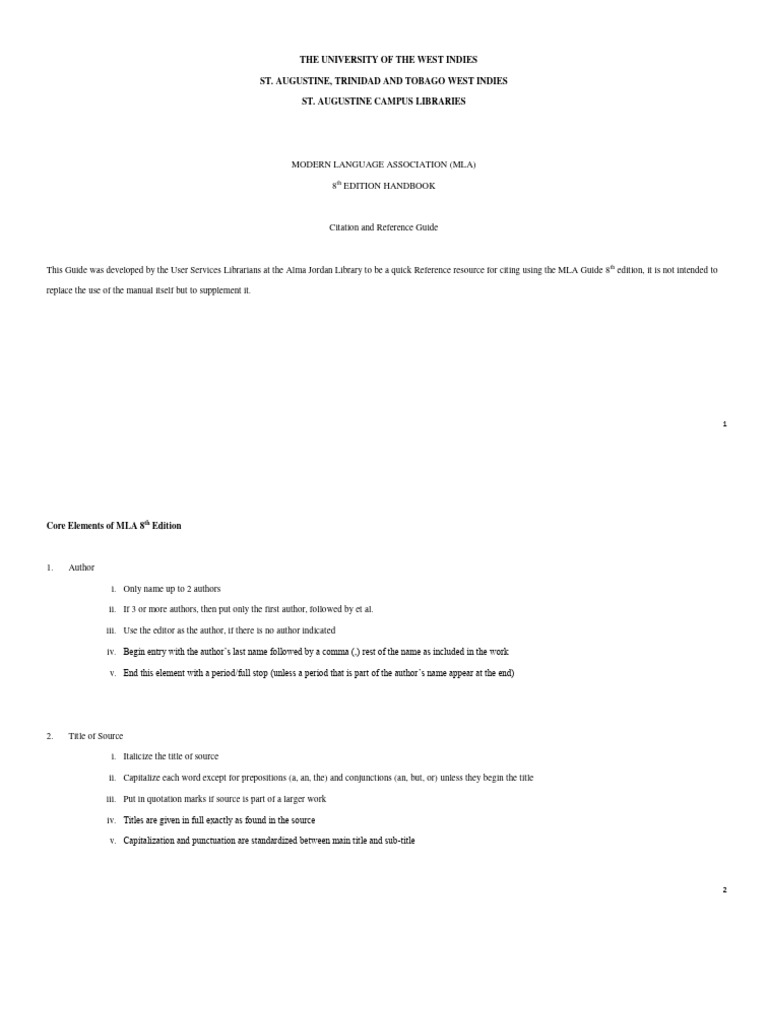Mastering in-text citations in Modern Language Association (MLA) style is crucial for academic integrity and effective scholarly communication. In-text citations, strategically placed within your writing, acknowledge the sources that have informed your arguments and analysis. This guide offers a comprehensive exploration of MLA in-text citation practices, providing clarity and nuanced instruction to navigate the complexities of source attribution.
The Core Principles of MLA In-Text Citations
At its core, the MLA in-text citation system aims for brevity and clarity. The fundamental principle is to provide just enough information within the text to direct the reader to the full bibliographic entry in the “Works Cited” list at the end of your document. This system relies heavily on the author-page method. Typically, this entails including the author’s last name and the relevant page number(s) from which the information was derived, enclosed in parentheses. For instance, a citation might appear as (Smith 42). But, what happens when that is not enough?
Author-Page Citations: The Foundation
The author-page system is the bedrock of MLA in-text citations. When the author’s name is not mentioned in the sentence itself, it is included within the parenthetical citation: (Jones 78-80). Conversely, if the author’s name is integrated into the sentence, only the page number is necessary within the parentheses. Example: As Johnson argues, “the pen is mightier than the sword” (122).
Navigating Works with No Author
When citing a work without a named author, employ an abbreviated version of the title in the in-text citation. This abbreviated title should correspond to the entry in the “Works Cited” list. For example, if citing an article titled “The Impact of Social Media,” the in-text citation might appear as (“Impact” 15). Brevity is paramount; use just enough of the title to ensure unambiguous identification.
Citing Works with Multiple Authors
The approach to citing works with multiple authors varies depending on the number of authors involved. For works with two authors, include both last names in the citation: (Smith and Jones 67). For works with three or more authors, you can either list all the last names or use the abbreviation “et al.” which means “and others”: (Brown et al. 92). The “et al.” abbreviation streamlines citations, especially when dealing with sources with extensive authorship.
Addressing Works by the Same Author
When citing multiple works by the same author, include a shortened version of the title in the in-text citation to distinguish between the sources. For instance, if citing two books by John Doe, one titled “The River” and the other “The Mountain,” the citations might appear as (Doe, “River” 34) and (Doe, “Mountain” 88), respectively. This provides clarity and prevents ambiguity.
Incorporating Indirect Sources
Indirect sources, also known as secondary sources, are instances where you are citing information that was originally presented in another source, but you encountered it in your current source. In such cases, use the phrase “qtd. in” (quoted in) to indicate that you are citing a quote or idea from a secondary source. Example: (Smith, qtd. in Jones 55). This acknowledges both the original source (Smith) and the source where you found the information (Jones).
Citing Electronic Sources
Citing electronic sources often presents unique challenges, particularly when page numbers are absent. If an electronic source lacks page numbers, use other identifying information, such as paragraph numbers, chapter numbers, or section headings, if available. If no such markers exist, simply omit the page number from the citation. If there are numbered paragraphs, cite them this way (Smith, par. 4).
Handling Long Quotations
Quotations exceeding four lines of text should be formatted as block quotations. Block quotations are indented one inch from the left margin and do not include quotation marks. The parenthetical citation follows the last line of the block quotation. This visual distinction signals to the reader that the passage is a substantial excerpt from another source.
Citing Plays and Poems
Citing plays and poems requires a different approach. Instead of page numbers, use act, scene, and line numbers for plays, and line numbers for poems. For example, a citation from Shakespeare’s *Hamlet* might appear as (Hamlet 3.1.64-65), indicating Act 3, Scene 1, lines 64-65. For poems, cite the line numbers: (Wordsworth 4-6).
Citing the Bible
When citing the Bible, provide the book, chapter, and verse. Abbreviate the book title if it is commonly abbreviated. For example, a citation might appear as (Gen. 1.1), indicating Genesis, chapter 1, verse 1. Consistency in abbreviation is key.
The Significance of Accuracy and Consistency
Accuracy and consistency are paramount in MLA in-text citations. Ensure that all in-text citations correspond precisely to the entries in your “Works Cited” list. Errors or inconsistencies can undermine your credibility and potentially lead to accusations of plagiarism. Meticulous attention to detail is essential for maintaining academic integrity. Think of it as presenting a logical argument, showing your workings and demonstrating your reasoning clearly and effectively to the reader.
